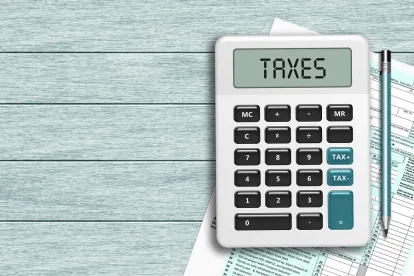On March 18, 2020 the Families First Coronavirus Response Act (FFCRA) was enacted, providing small and midsize businesses with refundable tax credits to reimburse them for the costs of paid sick and family leave wages to their employees for COVID-19 related leave. On March 27, the Coronavirus Aid, Relief and Economic Security Act (CARES Act) was enacted to encourage eligible employers to keep employees on their payroll, despite economic hardship caused by COVID-19, by providing eligible employers with an employee retention tax credit. Eligible employers may be entitled to tax credits under both FFCRA and the CARES Act but not for the same wages. So how do eligible employers take advantage of the tax credits provided for in these acts?
Tax Credits under the FFCRA
The FFCRA provides tax credits under the Emergency Paid Sick Leave Act (EPSLA), and the Emergency Family and Medical Leave Expansion Act (FMLA Expansion). EPSLA generally requires certain employers to provide up to 80 hours of qualified sick leave wages to employees for qualifying purposes. The amount of qualified sick leave wages paid under the EPSLA are capped at $511 per day, or up to $5,111 in the aggregate ($200 per day, or up to $2,000 in the aggregate, if the leave is for caring for a child or family member), for each employee. FMLA Expansion generally requires certain employers to provide up to 12 weeks of qualified family leave wages to employees for qualifying purposes, though the first two weeks may be unpaid. The amount of qualified family leave wages paid under FMLA Expansion are capped at $200 per day for each individual, up to $10,000 in the aggregate for each employee. For purposes of these acts, the wages must be paid between April 1, 2020 and December 31, 2020.
Generally, employers subject to paid leave requirements under these acts are entitled to fully refundable tax credits to cover the cost of the leave required to be paid for the periods of time during which employees are unable to work for various COVID-19 related conditions. The credit is allowed against the employer's portion of Social Security taxes and is equal to 100 percent of the qualified sick leave wages paid under the EPSLA and/or 100 percent of the qualified family leave wages paid under FMLA Expansion. In addition to the qualified sick leave wages paid and the qualified family leave wages paid, the credit is increased by the employers' share of the Medicare taxes imposed on those wages and any qualified health plan expenses allocable to those wages.
Guidance provided by the IRS in COVID-19-Related FAQs sets forth the information and documentation required in order for the employer to substantiate its eligibility for the tax credits for qualified leave wages. See FAQs 44-46. The FAQs provide guidelines for substantiation to be received from the employee, as well as additional documentation that should be maintained by the employer for at least four years.
To claim the credits, the eligible employers report their total qualified leave wages (and allocable health plan expenses and the employer's share of Medicare tax on the qualified leave wages) for the calendar quarter on their federal employment tax returns (Form 941 for quarterly filers). However, in anticipation of receiving the credits, eligible employers can fund qualified leave wages by first accessing the federal employment taxes that are set aside for deposit with the IRS. Employment taxes subject to retention include federal income tax withheld from employees, the employees' share of Social Security and Medicare taxes, and the employer's share of Social Security and Medicare taxes with respect to all employees. This means that the eligible employer can reduce the amount of federal employment taxes it would otherwise be required to deposit for that quarter before it is required to make the federal tax deposit. If certain requirements are met, federal tax deposit penalties under IRC 6656 will not apply. Penalty relief provisions are set forth in Notice 2020-22.
Advance payment of the credit is also available. If the employment tax deposits are not sufficient to cover the credit, the employer can submit Form 7200, Advance Payment of Employer Credits Due to COVID-19 to receive an advance payment from the IRS. This form must be submitted by fax.
For more information and details on the tax credits for required paid leave, see the COVID-19-Related FAQs provided by the IRS.
Tax Credits under the CARES Act
The CARES Act provides many businesses with the opportunity to claim an Employee Retention Credit (ERC) if the business was financially impacted by COVID-19. The ERC was designed to assist businesses in keeping employees on their payroll during the pandemic. On March 31, the IRS issued IR-2020-62 to provide additional information regarding ERC.
ERC is available to all employers with two exceptions. State and local governments, along with their instrumentalities, are not entitled to ERC nor are small businesses who take small business loans under the Payroll Protection Program. In addition, qualifying employers for ERC must fall into one of two categories:
-
the employer's business is fully or partially suspended by government order due to COVID-19 during the calendar quarter;
-
the employer's gross receipts are below 50 percent of the comparable quarter in 2019.
The amount of ERC is 50 percent of qualifying wages paid up to $10,000 (maximum credit of $5,000 per employee) for wages paid after March 12, 2020 and before January 1, 2021. Included in the calculation of qualifying wages is a portion of the cost of employer-provided health care allocable to the wages.
Qualifying wages are based on the average number of employees in 2019. For employers with less than 100 employees on average in 2019, ERC is based on the wages paid to all employees, regardless if they worked or not. For employers with over 100 employees on average in 2019, ERC is based only on the wages paid to employees who did not work during the calendar quarter.
To claim the credit, the eligible employer reports their total qualified wages and the related credits for the calendar quarter on their federal employment tax returns (Form 941 for quarterly filers). However, in anticipation of receiving the credits, eligible employers can fund qualified wages by first accessing the federal employment taxes that are set aside for deposit with the IRS. This means that the eligible employer can reduce the amount of federal employment taxes it would otherwise be required to deposit for that quarter before it is required to made the federal tax deposit. If certain requirements are met, federal tax deposit penalties under IRC 6656 will not apply. Penalty relief provisions are set forth in Notice 2020-22.
Advance payments of ERC are also available. If the employment tax deposits are not sufficient to cover the credit, the employer can submit Form 7200, Advance Payment of Employer Credits Due to COVID-19 to receive an advance payment from the IRS. This form must be submitted by fax.




 />i
/>i

